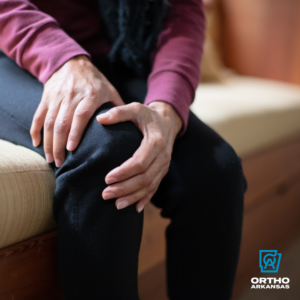
There are many different types of arthritis — with different causes, aches and pains. Among more than 100 forms of this disease, rheumatoid arthritis and osteoarthritis are the most prevalent. However, they are very different in terms of their cause, symptoms and treatment — and how they damage our joints.
Understanding Rheumatoid Arthritis
The key to understanding rheumatoid arthritis starts with knowing how it differs from the most common and commonly known type, osteoarthritis.
Rheumatoid arthritis is actually two conditions. It is both an autoimmune and inflammatory disease. It occurs when your immune system attacks healthy tissues in your body causing painful swelling of the joints. Unlike “wear-and-tear” arthritis — caused by age, trauma or overuse — rheumatoid arthritis can occur at any time and has additional symptoms such as fatigue, loss of appetite and low mood. Likewise, it can also affect nerves, muscles and vital organs if left intreated.
Although the exact cause of rheumatoid arthritis is unknown, we do know that it typically afflicts people from ages 30 to 50, but it can occur at any age. It also happens more often in women than men.
How Rheumatoid Arthritis Damages Joints
When the immune system mistakenly attacks the joint lining, causing inflammation, this swelling can damage the smooth tissue that covers the ends of bones and erode the bone itself. Over time, the joints may become misaligned, lose their range of motion and develop deformities.
Rheumatoid Arthritis Symptoms
Rheumatoid arthritis is known for its flare-ups which are a sudden increase in joint pain, swelling, stiffness and even fatigue. These flare-ups often occur unexpectedly, disrupting daily routines and causing significant discomfort. In some cases, they can be triggered by infections or periods of high stress, making them hard to manage.
Affecting the hands, wrists, feet, ankles, knees, shoulders and elbows, the most common symptoms of rheumatoid arthritis include:
- Joint pain: Persistent or recurring pain in multiple joints, often affecting opposite joints on both sides of the body.
- Joint swelling: Inflamed joints appear swollen, feel warm to the touch, and have a limited range of motion.
- Joint stiffness: Especially in the morning or after a period of inactivity, stiffness can make it difficult to move and perform everyday tasks.
- Fatigue: Ongoing fatigue and a general sense of being unwell, often due to the body’s inflammatory response.
- Loss of appetite: Some individuals with may experience a decreased appetite, leading to unintentional weight loss.
Diagnosing Rheumatoid Arthritis
Rheumatoid arthritis is diagnosed through a combination of techniques as there is no single test for it. However in the early stages, diagnosis can be difficult because symptoms are often mild and signs of the disease may not be seen on X-rays or blood tests.
Physical Examination: Your physician can assess the joints for common symptoms like swelling, redness and warmth.
Imaging Tests: X-rays, ultrasounds or MRIs can be used to evaluate joint damage and inflammation.
Blood Tests: Specific antibodies are checked, as they are often higher in individuals with rheumatoid arthritis.
Rheumatoid Arthritis Treatment
The goal of effective arthritis treatment is to improve your overall quality of life by reducing symptoms and inflammation and preventing joint damage. Treatment may involve a combination of strategies:
- Medications like anti-inflammatory drugs
- Lifestyle changes, such as regular exercise, a healthy diet, rest and stress management
- Physical therapy to improve joint flexibility, range of motion and strength
- Assistive devices like braces or splints to reduce pain and improve function
- Surgery in more advanced cases
With early diagnosis and appropriate treatment, the symptoms can be managed and joint damage can be minimized. It is important for patients with to work closely with their physicians to develop a treatment plan that suits their needs. With proper management and support, those with rheumatoid arthritis can live full and active lives.
Connect with OrthoArkansas
What hurts? Explore Our Services














